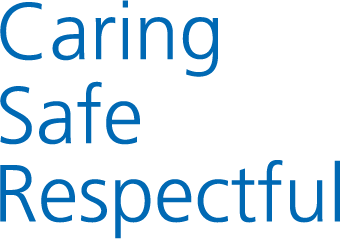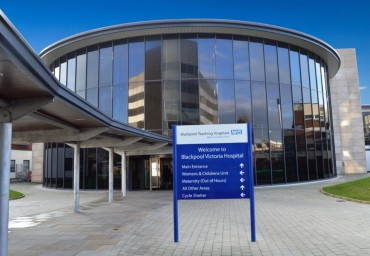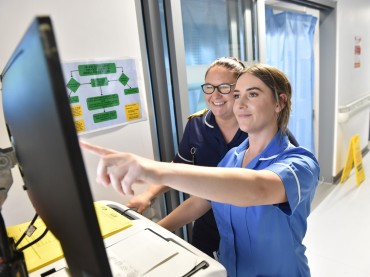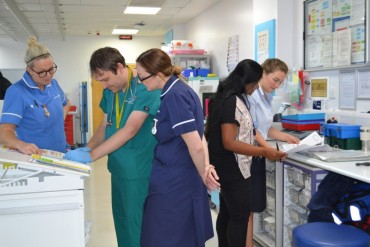Fluoroscopy is a study of moving body structures – similar to an X-ray “movie.” A continuous X-ray beam is passed through the body part being examined. The beam is transmitted to a TV-like monitor so that the body part and its motion can be seen in detail. Fluoroscopy, as an imaging tool, enables physicians to look at many body systems, including the skeletal, digestive, urinary, respiratory, and reproductive systems.
Arthography is often ordered to determine the cause of unexplained joint pain. This procedure may be conducted to identify problems with the ligaments, cartilage, tendons or the joint capsule. It may be able to locate cysts, evaluate function and structure. It may be able to determine the need for joint replacement. Most often, these procedures are performed in the shoulder, wrist, hip, knee or ankle.
Painful joints can be visualised with X-ray and treated under fluoroscopic guidance. Cortisone shots are most commonly given into joints, such as your elbow, hip, ankle, knee, shoulder and wrist. Even the small joints in your hands and feet may benefit from these injections.
A cholangiogram is a special X-ray procedure that is done with contrast dye to visualise the bile ducts. The bile ducts drain bile from the liver into the duodenum (first part of the small bowel).
This examination will demonstrate the bile duct and its branches to see if there are gallstones or tumour present.
In the procedure, the contrast medium is injected into the body and a series of X-rays are taken to reveal any abnormalities.
A contrast enema is a lower gastrointestinal exam that uses X-rays to view the large intestine. There are two types of tests: the single contrast technique, where contrast is injected into the rectum to gain a profile view of the large intestine, and the double-contrast technique, where both air and contrast media are inserted into the rectum.
One reason for this examination is to help in the diagnosis of colon and rectal cancer and inflammatory disease. Detection of polyps, diverticula and structural changes may also be confirmed by using this examination.
The decision to perform a contrast enema is based upon your history of altered bowel habits.
A barium swallow and meal is an X-ray examination of the oesophagus (gullet), stomach and intestines. These areas are not seen clearly on plain X-ray films, so contrast dyes such as barium or Gastrografin are used to outline them.
This test is often requested by doctors for patients who have difficulty swallowing or have pain when they swallow. These symptoms may indicate a narrowing in the oesophagus, ulceration or inflammation of the oesophagus. It could also indicate a failure of normal relaxation of the oesophagus during swallowing.
A cystourethrogram is a study of the lower urinary tract. Similarly, a cystogram examines the bladder, and the urethrogram examines the urethra (the opening through which you urinate). The examination shows the appearance of the bladder and/or the urethra and how they fill.
A letter will be sent to you containing all the preparation instructions you will require before your visit.
The investigation involves exposure to X-rays. X-rays consist of a type of radiation known as ionising radiation. The doses that are used in medical X-rays are very low and the associated risks are minimal. We keep the doses as low as possible and make sure that the benefits of having the X-ray outweigh any risk.
Furthermore, the contrast dye that is often used contains iodine, which some people are allergic to. If you have had an allergic reaction to X-ray contrast in the past of if you have a known allergy to iodine, please let us know.
Also, X-rays can be harmful for an unborn baby and should be avoided by women who are or who may be pregnant. It is recommended that the examination is performed within 10 days of the first day of the onset of your menstrual period.
Complications that may arise during the Contrast Enema include perforation of the colon, water intoxication and allergic reactions. These conditions, however, are all extremely rare.
Arthrogram – When you arrive, report to X-ray Central Reception (Area 4) or X-ray North. You will be asked to change into a hospital gown and to remove jewellery, dentures, glasses and any metal objects or clothing that might interfere with the X-ray images. You will then be called into the X-ray room and asked to lie on the X-ray table. The team of Radiographers and Radiologists will position you for an optimal view of your joint.
The joint area will be cleaned and a local anaesthetic will be injected into the tissues around the joint to reduce pain. Next, if fluids are present in the joint, the radiologist may suction them out with a needle. These fluids may be sent to a laboratory for further study.
Contrast agents are then injected into the joint through the same location. After the dye has been administered, the site of injection will be sealed and you might be asked to move the joint to distribute the contrast. Images of your joint will be taken, some of which will be during movement.
Typically, the exam time is about 30 minutes.
Joint Injections – When you arrive, report to X-ray Central Reception (Area 4) or X-ray North. You will be asked to change into a hospital gown and to remove jewellery, dentures, glasses and any metal objects or clothing that might interfere with the X-ray images. You will then be called into the X-ray room and you will then be positioned in a way that allows the Radiologist to most easily insert the needle.
The area around the injection site will be cleaned and an image of your joint will be taken, so that the Radiologist knows exactly where to administer the medication. You will likely feel some pressure when the needle is inserted.
The medication is then released into the joint. A dressing will be placed over the injection site and you will be able to get dressed.
Cholangiogram – When you arrive, report to X-ray Central Reception (Area 4) or X-ray North. You will be asked to change into a hospital gown and to remove jewellery, dentures, glasses and any metal objects or clothing that might interfere with the X-ray images. You will then be called into the X-ray room and, depending on the procedure you are receiving, asked to either lie on the X-ray table or stand in front of it
The examination takes approximately 30-60 minutes.
Contrast Enema – When you arrive, report to X-ray Central Reception (Area 4) or X-ray North. You will be asked to change into a hospital gown and to remove jewellery, dentures, glasses and any metal objects or clothing that might interfere with the X-ray images. You will then be called into the X-ray room and will be asked to lie down on the X-ray table. An image of your abdomen will be taken, and the Radiologist will assess if the colon is adequately cleansed of stool. A well-lubricated tube is inserted into the rectum, and the bowels will be filled with contrast media. During this process, you must squeeze your buttocks together as much as you can, to prevent leakage.
After the intestines are filled, X-rays of the abdomen are taken, and this may be done in various table positions.
After the images are reviewed by the Radiologist, you will be able to get dressed.
Contrast Swallow Meal – When you arrive, report to X-ray Central Reception (Area 4) or X-ray North. The examination will be carried out by a team of staff, including a Radiologist, Radiographer and nurse. Your stomach must be completely empty for the examination to be successful. When you arrive you will be taken to a cubicle and asked to change into an X-ray gown.
You will then be called into the X-ray room and asked to stand in front of the X-ray machine. You may be given a teaspoon of granules followed by a mouthful of tart lemon flavoured juice. This will fizz in your stomach, producing gas, which will allow all parts to it to be seen clearly. You will then be asked to swallow some barium liquid and the images of your stomach will be viewed on the television screen by the radiologist whilst you do so. A series of X-ray pictures will be taken with you moving into different positions (including some lying down). You may be given an injection to relax the stomach.
This process usually takes about 15-20 minutes.
Micturating Cystourethrogram, Cystogram, Urethrogram – When you arrive, report to X-ray Central Reception (Area 4) or X-ray North. The procedure is done by a radiologist with help of a radiographer. The procedure uses x-rays and contrast dye to show the lower urinary tract. A small amount of contrast dye will be put into your bladder via a catheter. As the contrast flows into your lower urinary tract, pictures will be taken. You may be repositioned so that the area can be viewed from a various angles. Once the images have been taken, the catheter will be removed and you will be able to use the toilet. You may be asked to return to the room so that additional X-ray images may be taken of your empty bladder.
The results of your examination will not be given to you on the same day. To receive these results you will need an appointment see either the Consultant who referred you, or your own GP. You will be told after the examination which of these Doctors you need to see.
Arthrogram – You should rest for approximately 12 hours. Your joint may be wrapped in an elastic bandage. Noises in the joint are normal for a few days following the procedure. Swelling may occur, if it does an ice pack may bring some relief. You may use paracetamol or ibuprofen for pain relief. Please avoid aspirin based products.
Joint Injections – You may see redness or feel warmth to the face after the cortisone shot. Protect the injection area for a day or two. For injections to a joint such as the knee, try and stay off it as much as possible. Apply ice packs if the injection site swells.
Contrast Enema – Drink plenty of fluids. Take time to rest. Do not worry if your stools are lighter in colour after the examination. Also do not worry if your bowel movements are not present the following day.
Contrast Swallow / Meal – You may eat normally. Your bowel movements may be paler than usual. This is normal. You may also be constipated so drink plenty of fluids.
Micturating Cystourethrogram, Cystogram, Urethrogram – Drink lots of fluids after the examination to help flush out the dye in your system.



